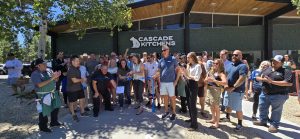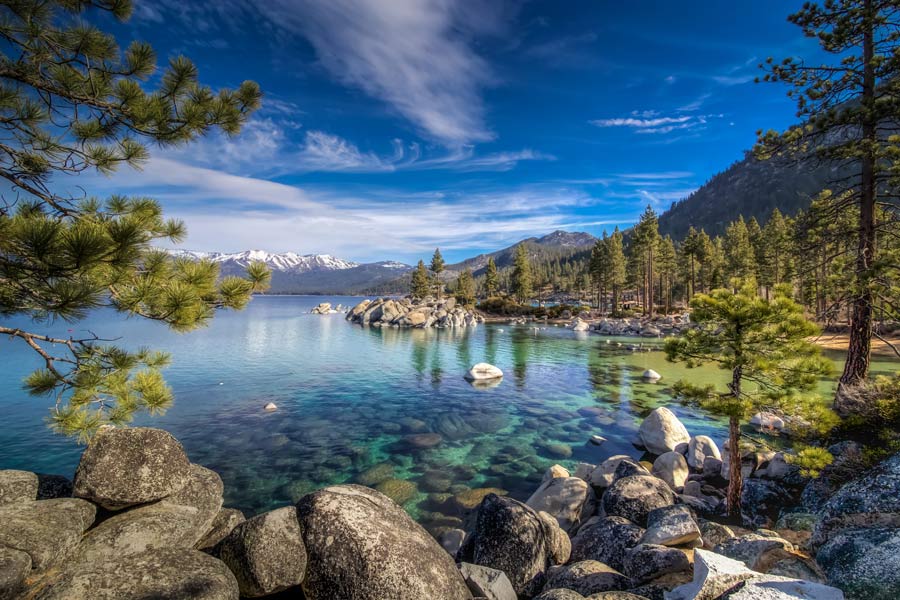Thru the basin; A guide to thruhiking the Tahoe Rim Trail
There are many ways to experience and enjoy Lake Tahoe in the summer, from sunbathing on the beaches to splashing in the lake’s crystal clear waters. For those looking to hike, bike or take their equine friends into the woods, there are hundreds of miles of trails in and around the basin.
Nothing beats one of Tahoe’s more well-known trails, the Tahoe Rim Trail, a 165+ mile single- track trail that takes users across alpine ridgelines, through wildflower meadows, and ancient forests, and to pristine high alpine lakes.
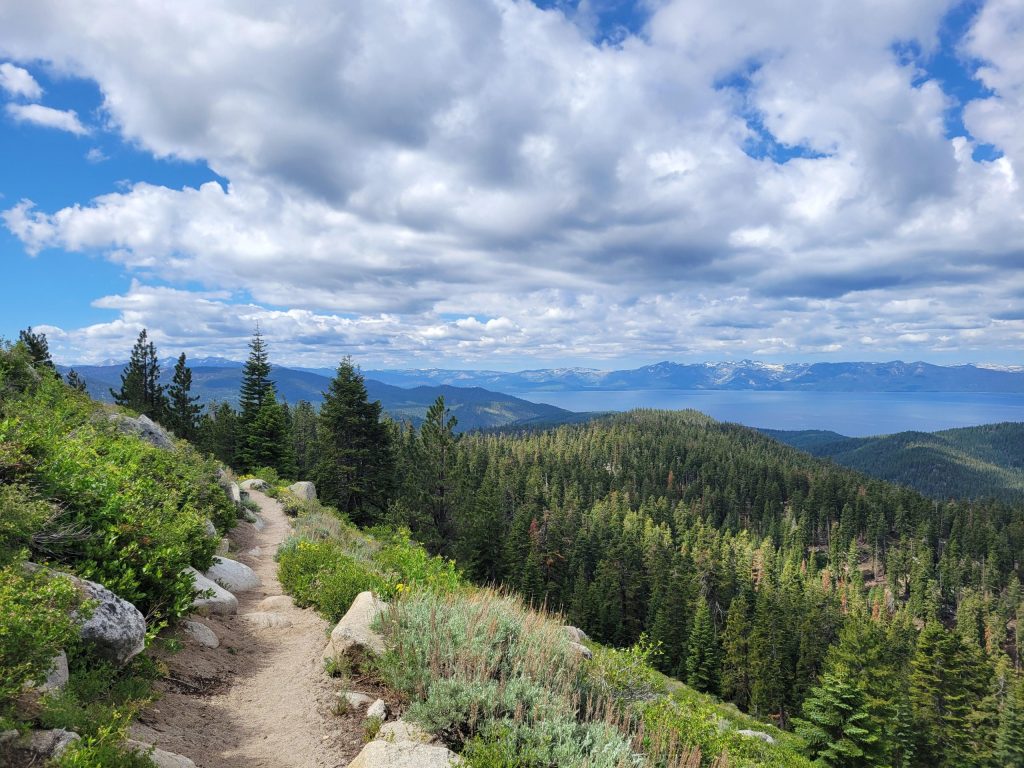
According to the Tahoe Rim Trail Association’s website, “The trail circumnavigates the ridge lines of the Lake Tahoe Basin, crossing six counties, four National Forests, three wilderness areas, two states and one state park.”
Open to hiking, equestrians, and mountain biking (in most areas), the rim trail has something for everyone, whether it be an easy day-trip or an epic multi-day adventure.
Backpacking is one of the popular options for enjoying the trail and while many people tackle it sections at a time, a good deal of people conquer the trail in one fell swoop and thru-hike the full trail. For those looking to join the ranks of the hardy thruhikers, here a guide to taking on the trail.
THE HISTORY
The dream for a trail circumnavigating the Lake Tahoe basin came to forester Glen Hampton in 1981. Others shared his goal and in 1982, Tahoe Rim Trail Fund was formed and granted non-profit 501c3 status. The goal was to complete the trail within 10 years.
However, construction on the Luther Pass didn’t begin until 1984 and the first trailhead at Big Meadow wasn’t completed until 1990. The full loop wasn’t closed until 2001.
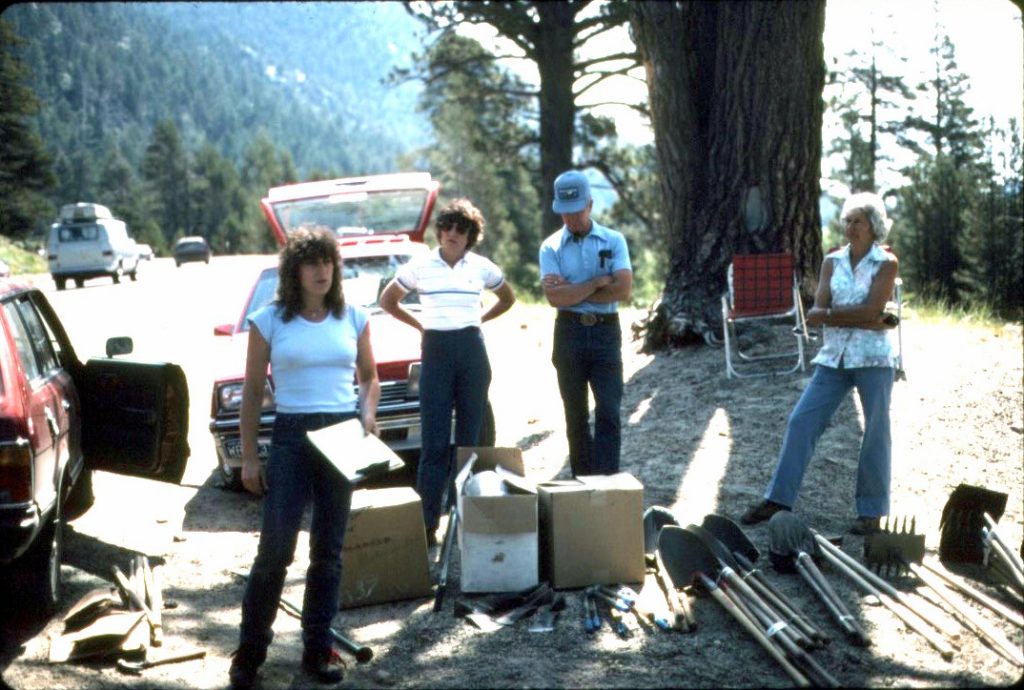
“They originally thought it would take 10 years and be a 70 mile loop,” said Daniel Corona, Communications Manager, Tahoe Rim Trail Association. “They vastly underestimated how big the basin is… they underestimated how much time it would to connect some of those trails and how much was to be done in the backcountry.”
The Tahoe Rim Trail Association manages and maintains the trail, as well as, approximately 30 miles of side and connector trails. In 2003, the entire Tahoe Rim Trail was designated as a National Recreation Trail (aside from approximately 50 miles that are co-located with the Pacific Crest National Scenic Trail).
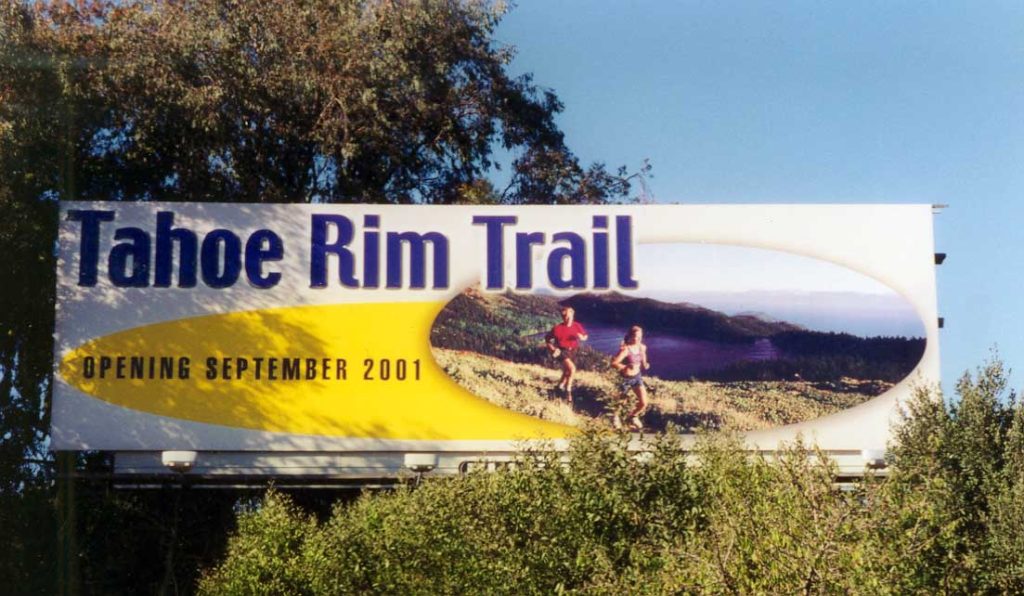
In 2009, the 1,000th person joined the 165 Mile Club, meaning they have completed the entirety of the Tahoe Rim Trail.
Also in 2009, Ultra runner Killian Jornet set the fastest supported thru-hike record at 38 hours and 36 minutes. That record wasn’t beaten until 2020, when Adam Kimble set the new record at 37 hours 12 minutes and 15 seconds.
Because of reroutes, the trail was about six miles longer in 2020 than in 2009, making Kimble’s achievement even more impressive.
The record for fastest known time unsupported was set in 2023 by Amber Weibel at 49 hours and 39 minutes.
The TRTA breaks the trail into eight segments on its website, each about 12.2 to 32.5 miles. There are 10 official trailheads along the trail. The trail as a whole gains about 24,000 ft of elevation, its lowest point it in Tahoe City at 6,300 and the highest is 10,338 feet at the top of Relay Peak.
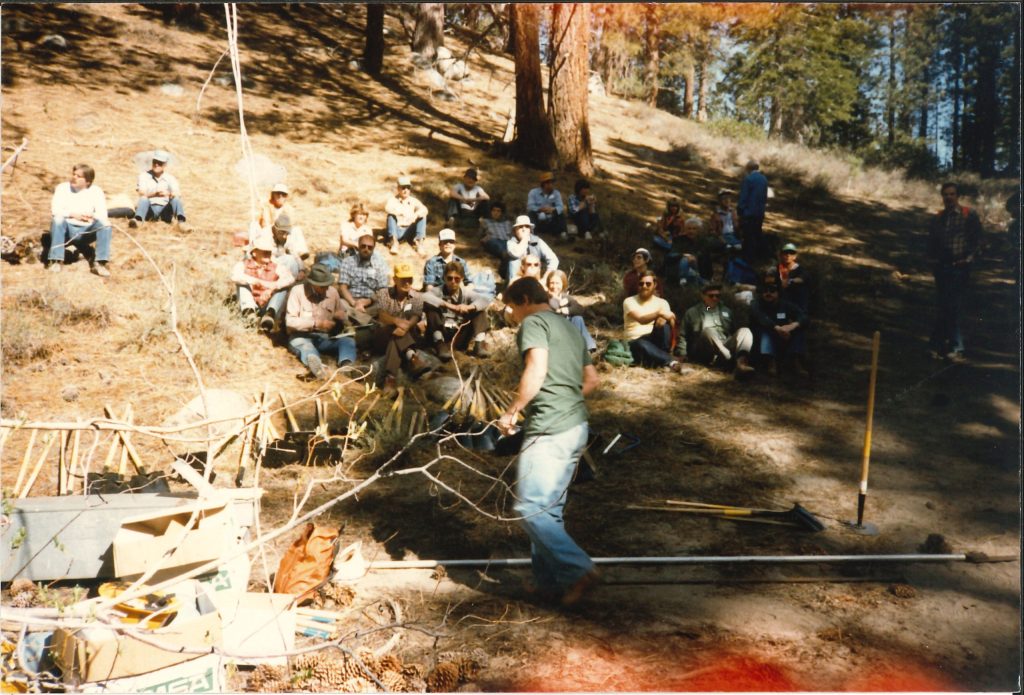
THRU-HIKING
The TRTA offers several guided trip options on the trail, including a segment hike series, in which hikers can complete the entirety of the trail with a guide over a season, one segment at a time. It also offers a guided thru-hike expedition.
Tahoe Magazine sat down with Sharell Katibah to discuss the ins and outs of thru-hiking the trail. Katibah is not only a member of the TRTA board but has guided both the segment hikes and several thru-hikes. She started her experience with the rim trail as a participant of the guided segment hikes.
“I kind of just fell in love with the whole thing,” said Katibah, and began receiving training to become a guide herself.
The TRTA’s guided thru-hike trip is 15 days. Kaitbah knows of people who have completed in one week and people who have taken three weeks.
“I would say somewhere around two weeks is probably an optimal time for most hikers,” said Katibah. “My personal view is that you miss a ton by doing it in a week because I don’t think you’re stopping and smelling the roses and learning about the wildflowers and learning the real history of everything.”
The downside to taking longer than two weeks is having to plan out an extra week of food and water.
WHERE TO START?
There is no hard and fast rule on where to start your joining on the rim trail. The TRTA website has maps for all eight segments.
The maps recommend doing the trail clockwise, and while there is no rule saying trail users must go clockwise, Katibah said most users do. Katibah said a lot of people start in Tahoe City because it is the lowest point and because of the trailhead’s proximity a large town where people can stock up on supplies.
“The problem to me, which is starting there, is that you have four miles of climbing up right away,” said Katibah. She adds that if you’re starting that climb, you’ll have a fully loaded back, i.e., carrying the most weight you’ll be carrying until you re-supply.
She also notes that its a hot section and there are limited water opportunities in that section. “Water is a huge deal on the Tahoe Rim Trail.”
The TRTA guided hike starts on Kingsbury Grade, which also offers the benefit of being near a re-supply spot.
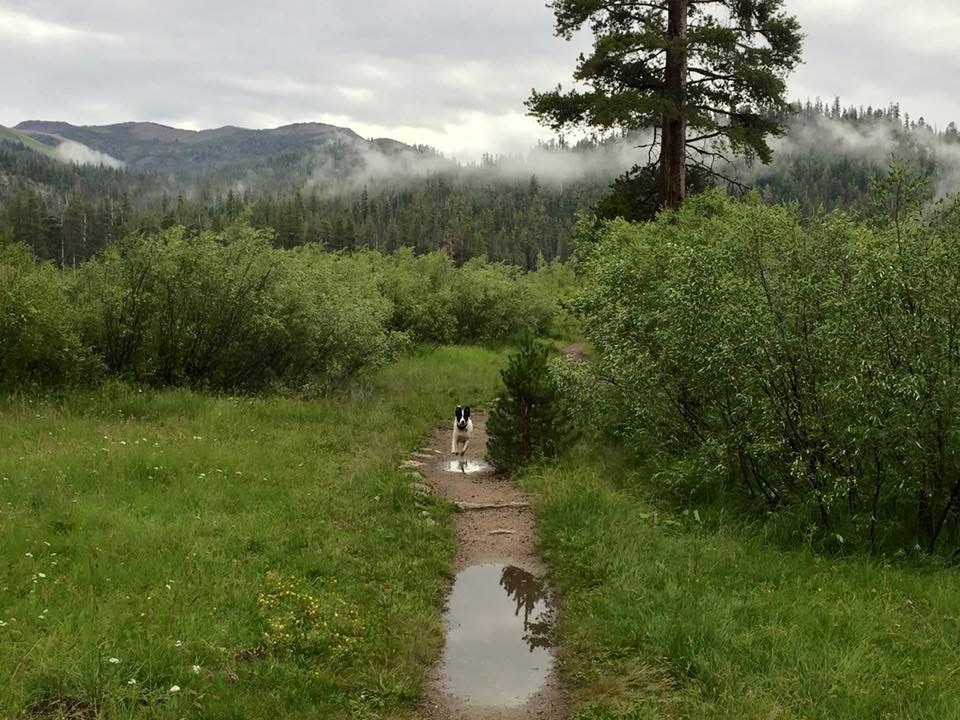
WHEN TO START?
“It’s kind of like, pick your poison,” said Katibah.
Timing-wise, if you start your hike later in the season, the eastern side of the basin has limited water opportunities, so if you do plan to start in Tahoe City, it’s best to start earlier in the season, like June.
However, there is a risk of starting too early.
“You could run into snow in the higher parts of the trail, and, that’s always an issue. Some spots are not very easily passable, so if you’re early season in a heavy snow year, that’s gonna delay you,” said Katibah. Also adding that mosquitoes tend to be worse in the early season, especially in Desolation Wilderness.
Another plus to starting early in the season is that the days are longer, so there is more hours available for hiking. Katibah, however, prefers starting later in the season, in August.
“I really like hiking in August, because the mosquitoes are usually down and the wildflowers are, up in a lot of areas, especially the higher areas.”
The downsides are potentially low water and you could be running into fire season.
FOOD AND WATER
Unlike thru-hiking a trail like the Pacific Crest Trail or the Appalachian Trail, the Rim Trail doesn’t offer regular drop boxes along the way, adding an extra level of complexity to food planning. Along the trail, the Mt. Rose Campground host will keep your resupply.
There is also a store at Echo Lakes where you can buy basics. Katibah recommends, depending on where you start, taking a zero day, or a non-hiking day, to travel into Tahoe City or South Lake Tahoe to buy groceries.
However, Katibah said most people arrange for friends or family to meet them at trailheads along the way to bring resupplies. Although arranging for resupplies can be tricky, carrying too much food also adds the burden of having too much weight on your back.
WHAT DO YOU NEED TO KNOW?
Camping at alpine lakes on the trail is first-come, first-serve with the exception of campsites in Desolation Wilderness. Both day-use and camping in Desolation Wilderness require a permit, which can be obtained on http://www.recreation.gov.
The Tahoe Rim Trail Association offers several Trail Talks and classes, including “How to complete the Tahoe Rim Trail,” “Backpacking 101,” and “Wilderness First Aid.” You can also take one of the association’s guided segment hikes or thru-hikes.
Editor’s note: This article originally appeared in the Summer 2025 edition of Tahoe Magazine.

Support Local Journalism

Support Local Journalism
Readers around the Lake Tahoe Basin and beyond make the Tahoe Tribune's work possible. Your financial contribution supports our efforts to deliver quality, locally relevant journalism.
Now more than ever, your support is critical to help us keep our community informed about the evolving coronavirus pandemic and the impact it is having locally. Every contribution, however large or small, will make a difference.
Your donation will help us continue to cover COVID-19 and our other vital local news.






